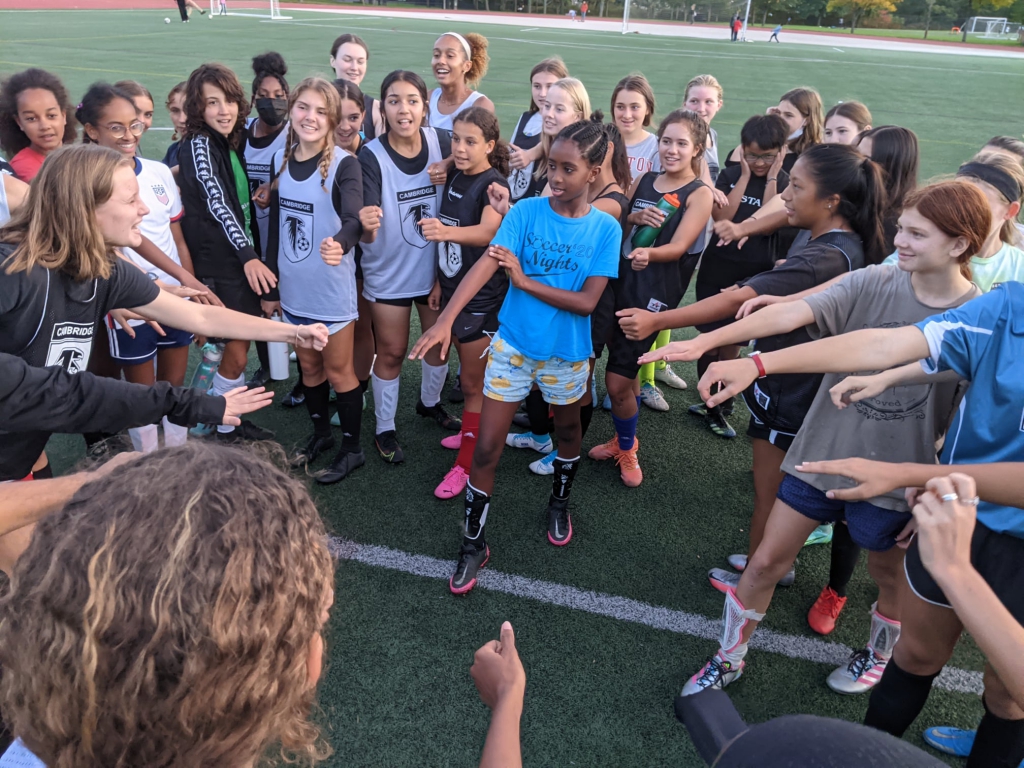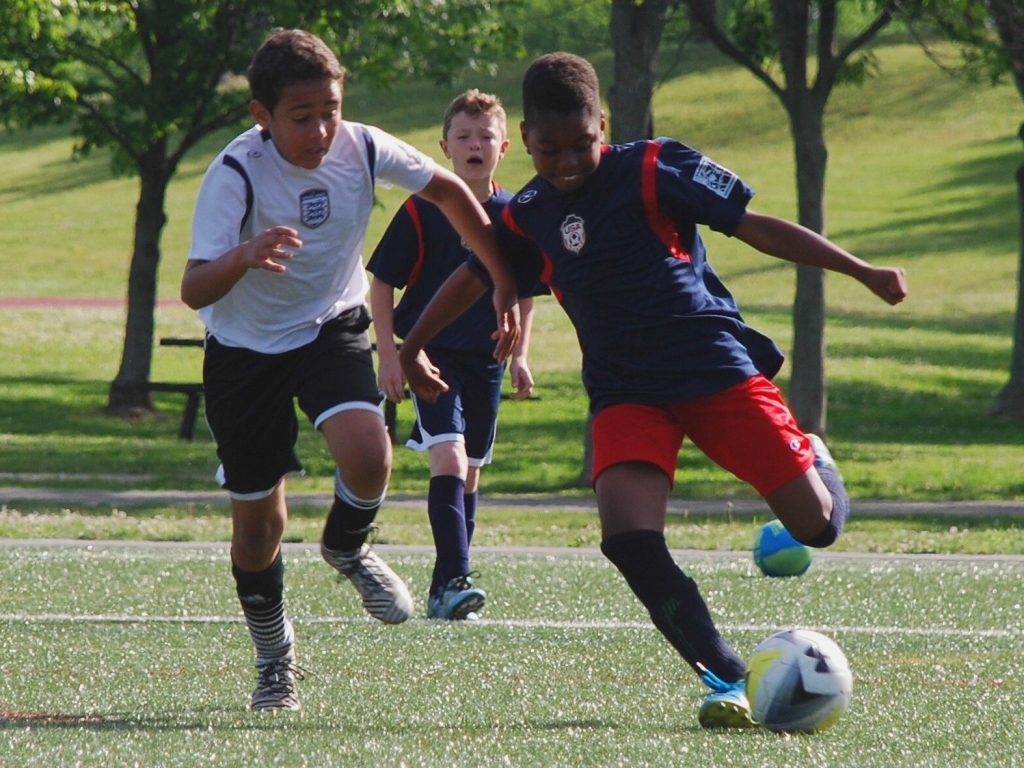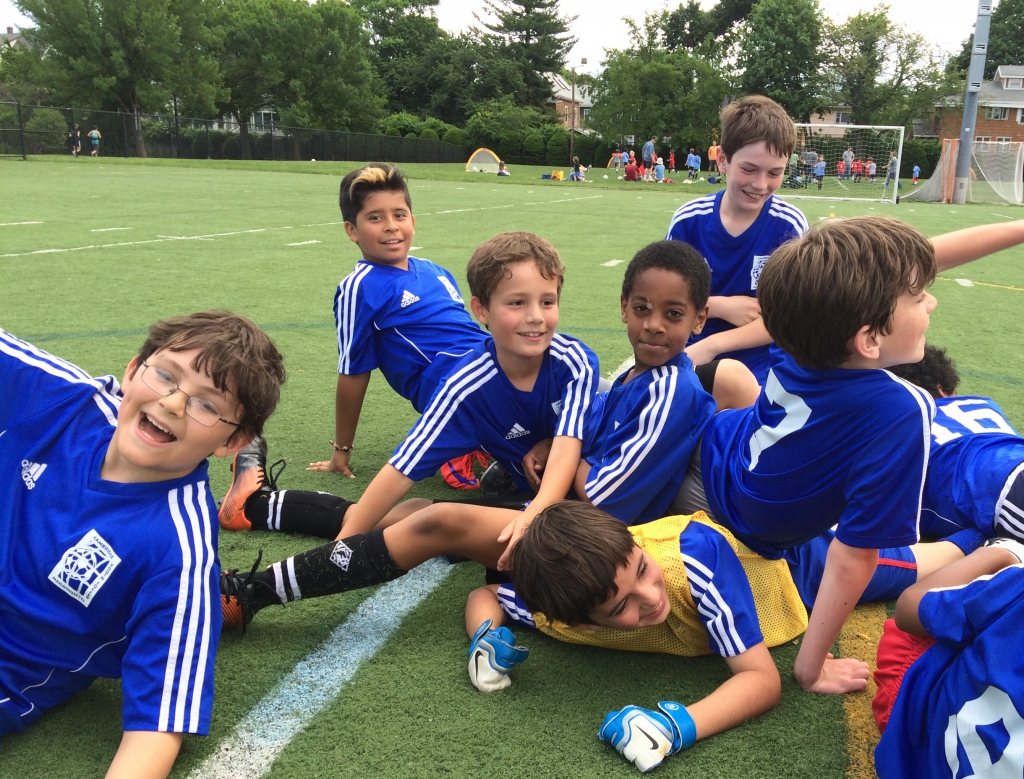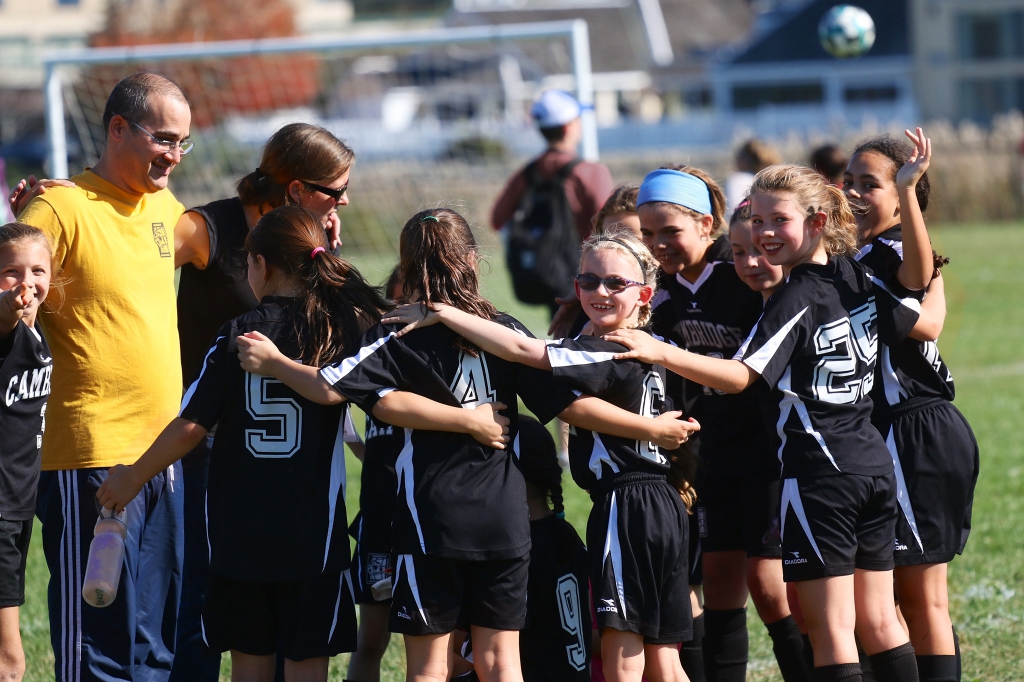
You don’t need a lot of money or a fancy process to create a successful youth sports program. Kids just want to have fun, and fun is how you increase participation. However, increasing your participants requires a sense of community, understanding of what kids and parents want, passion, and sincerity—nothing extraordinary, just caring, creativity, and perspective.
Cambridge Youth Soccer (CYS) is a youth soccer program that has accomplished just that. Jason Targoff, President of CYS, wanted to focus on developing a soccer program that made kids really want to play – not just at the games on the weekends, but at the practices as well. To accomplish this, CYS made simple changes. He believes simplicity is a key factor and has the most profound impact on young players. Therefore, when CYS began applying the fun factor, kids began flocking to the program.
Over the years, CYS had steady participation of about 850 kids. Then in 2014, Jason and the Board implemented a handful of new ideas to better engage with their players, and they began to see their participation rise. Cambridge now welcomes over 1,500 players a year. These creative and simple changes created a roadmap to success, which Jason recently shared.
Uniforms and Team Names
Creating a true authentic soccer feel and experience is an important part of the program at Cambridge. How you put this into action will make playing soccer interesting, alluring, fun, and attractive. So Jason implemented a few exciting revisions.
Firstly, he changed the names of the teams from colors to countries. This thrilled the young players. Rolling with the excitement, Jason and the Board also changed the players’ T-shirts to jerseys to enhance their experience. However, this turned out to be a more delicate issue, but not impossible—the T-shirts cost $5 whereas the jerseys cost $20. The board was uncertain about swapping to jerseys because there was not a lot of money in the budget to experiment. Without hesitation, Jason and a few members of the club decided to raise some money to offset the cost. And, with Board’s faith in Jason’s intuition, they just decided to go for it and roll it out. The jerseys were the icing on the cake.
By implementing these two changes, the children could now imagine they were playing in a professional setting, igniting a genuine connection to their team, healthy competition with their friends, and a love for soccer.
The players also began wearing their jerseys outside game day, and family and friends would ask about their jerseys. Therefore, the jerseys became word-of-mouth marketing for CYS. The kids started bringing their friends, which is exactly what Jason and the club needed in order to grow the CYS program.
“We just rolled out these uniforms. When the kids showed up to soccer in the fall, rather than getting T-shirts, they were getting nice jerseys, and you could see them starting to wear them around town. They were very proud of them. Uniforms may seem unimportant, but sometimes adults don’t realize what’s important to 10-year-olds.” – Jason Targoff

Equal Opportunity for All
CYS’ growth was mainly driven by word of mouth. Word proved to spread quickly through a community when you have a fun and engaging program. However, active recruiting and creating equal access to the sport was also important.
Prior to 2014, CYS’s membership was not as representative of the entire community of Cambridge as it could be. Jason and CYS identified this gap and wanted to ensure that low-income families and kids were included. Bridging the gap and integrating the community is what mattered most. So, the club evolved its financial aid program to better fit the needs of its community.
Simply offering opportunity is the key to developing a child’s potential and an excellent way to bring everyone in the community together.
“The truth is anyone can play soccer for $25 or less. All they have to do is ask. So we have tried to make asking for financial aid as easy as possible for our families.” – Jason Targoff
City and Travel League
Youth soccer clubs are typically judged by the success of their travel competitive programs. However, they are more costly to families and a large time commitment for players. There is nothing wrong with being a part of a travel team, but not everyone has the means or desire to play competitively. Travel select teams are fun for skilled kids but not for everyone, especially financially. Travel teams only tap into a select few individual players.
With the goal of creating opportunities for more players, Jason and the Board invested in their town leagues to create a culture for everyone to play, have fun, and develop their skills. In doing this, the town league took off growing more dramatically in comparison to the travel league—their strategy to separate the interest and intent of the two leagues paid off.
“I think the level of play of the kids has improved. It’s not just my opinion. It is based on where we were placing kids in the travel league prior to this year; we were placing kids on our teams at a higher level. We’re creating more good players out of this program than we were when the focus was on getting kids to travel soccer earlier.” – Jason Targoff
Firstly, the recreational league took off because it was localized. The games were played on the same fields every week. Parents loved this because of the time factor, and they didn’t need to prepare for a long haul to play soccer.
The other important element was that CYS always has two games simultaneously played on the same fields. So, the parents from the teams see each other, and the kids see their friends. If friends are not playing against each other, they might be playing on the adjacent field. The players and parents all hang out, socialize, and meet new people while watching the games. Doing this establishes friendships and greater bonds in the community.
“It just creates a great community that feels really exciting. Most people said they registered for travel because they thought that’s what you had to do to play competitive soccer. And now that everybody is playing Saturdays in our City Leagues, that is different.” – Jason Targoff
Jason saw more opportunities for growth in the town league over travel leagues because younger kids in the community simply wanted to learn the game and participate with their friends. There, you can simply play and enjoy soccer and maximize your time having fun. If their passion for soccer took them to the next level of competitive play, there would be opportunities for those players as well.
“We still have a select team on Sunday, and those kids play on Saturday too. And, so those kids practice once a week with their Saturday team, their city league team, and they practice once a week with their select team.” – Jason Targoff

Local Friends Play
As CYS’ growth increased, they wanted to maintain soccer’s fun, community-centric factor along with its competitive edge. Jason and the club believed these two things go hand in hand. For example, Jason says Saturdays are very competitive and fun on the fields. Kids really want to win, and they’re also having fun. That is the incredible thing about kids playing against friends. It is competitive, fun, and friendly.
Furthermore, CYS worked with their coaches on how to coach in a way that’s really helping the kids develop, grow, and learn to love the game. These things needed to be integrated. Jason felt the culture of soccer was changing and that the club needed to change and adjust with the times as well.
“When kids play against kids they recognize, it enhances competitiveness and fun. I think that’s often overlooked. People think the quality has to be high at an age where I think it’s probably more important to just get the kids out there to play and compete and have a great time with the game.” – Jason Targoff

Play-Practice-Play
Play-Practice-Play is a U.S. Soccer methodology for running practices where kids show up and play. It’s about learning the game through playing rather than talking and explaining the game. Playing is a perfect way for kids to learn. They get excited, and through excitement, they learn the game faster.
The Play-Practice-Play method is a perfect way for kids to learn the game but, most notably, to maintain interest and fun. It becomes boring for them when they are not playing, and you don’t want to lose their interest. Therefore, keep it fun, keep them playing, and you will have a successful program.
“Playing soccer as a kid, I remember listening to my coach talking all the time. I think the changes that we made programmatically have been reinforced in some ways by the new culture, which is really about learning to play the game by playing the game. Kids learn to play the game and improve their skills and their situational awareness, their “soccer sense”, by playing.” – Jason Targoff
Cambridge is a program that is fully staffed and run by volunteers. Volunteering is a priceless asset for youth sports organizations. Its mission helps children discover their true potential. Their vision shows children that greatness is bestowed upon everyone, even themselves. Like Magic Johnson said, “All kids need is a little help, a little hope, and someone who believes in them.”
Jason’s greater purpose and objective were to build a stronger foundation for his town program as well as build on CYS’s existing successes. The CYS vision focused on producing an integrated, happy, and healthy community of children and parents in the city of Cambridge. CYS provides every child in Cambridge the opportunity to play soccer in a fun, supportive, affordable, and competitive environment.
“My simple hope for all the players is to have a great time playing soccer. And we know that being on a team and working towards goals are fantastic experiences for any kid.” – Jason Targoff
Written by: Jason Kelly, writer for Stack.com
RELATED: Youth Soccer Coaching 101



